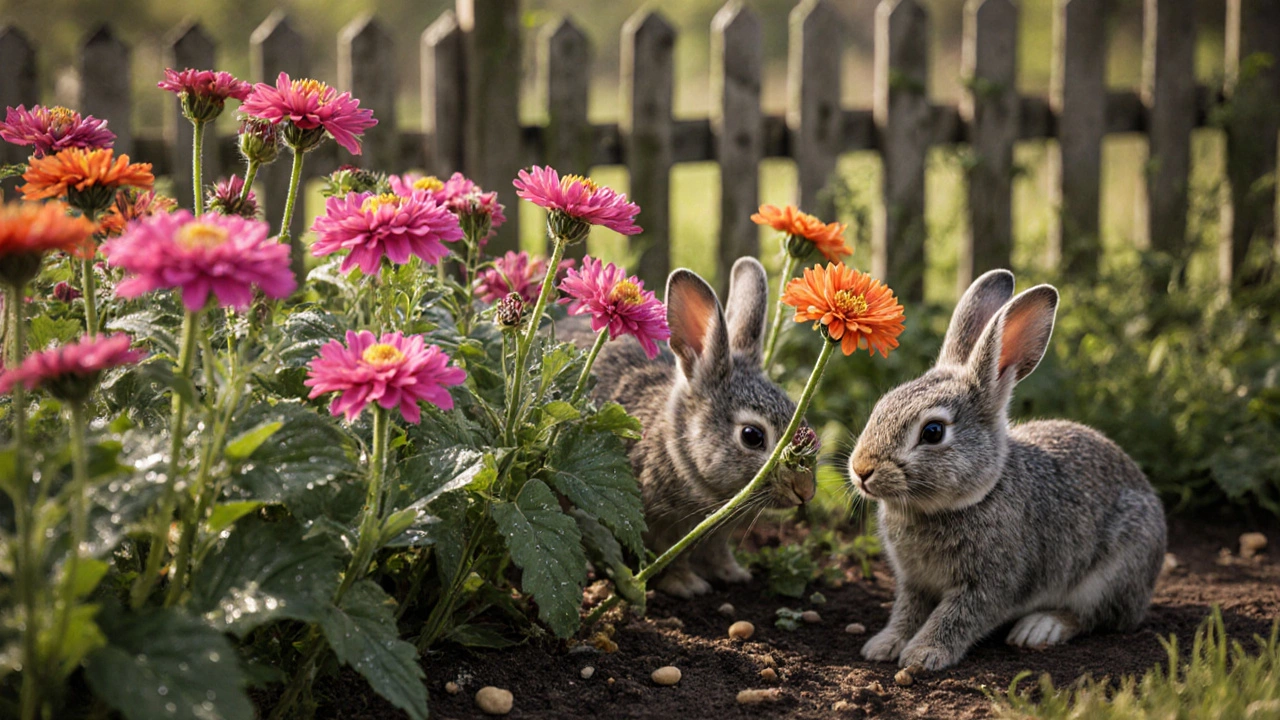Rabbits do eat zinnias, especially in spring and fall. Learn how to protect your kitchen garden flowers with simple, effective strategies - from cages to companion planting - without using harsh chemicals.
Zinnia Care: How to Grow Healthy, Colorful Zinnias in Indian Gardens
When you think of bright, no-fuss flowers that burst into color all summer, zinnias, a hardy, fast-growing flowering plant native to Mexico but widely grown across India. Also known as cut-and-come-again flowers, they’re one of the most reliable choices for Indian balconies, compound gardens, and even small backyard plots. They don’t need perfect soil, fancy fertilizers, or constant attention—just sun, a little water, and space to spread. That’s why they’re a favorite among beginners and seasoned gardeners alike.
Zinnias thrive in full sun, which is great news for most parts of India where sunlight is plentiful. They need at least 6 to 8 hours of direct light daily to produce those bold, daisy-like blooms. If your zinnias look leggy or pale, they’re not getting enough sun—not a soil problem, not a fertilizer issue. Just move them. They also prefer well-drained soil. Heavy clay? Mix in a bit of compost or coco peat. Too sandy? Add some organic matter. You don’t need to buy expensive soil amendments—leftover kitchen scraps, dry leaves, or even old potting mix from last season will help. The real enemy? Overwatering. Zinnias hate wet feet. Water at the base, not the leaves, and let the top inch of soil dry out between waterings. This simple habit prevents fungal diseases like powdery mildew, which shows up as white dust on leaves during humid monsoon months.
One thing you’ll notice if you grow zinnias: they bloom non-stop from spring through late autumn if you keep picking them. That’s the secret—deadheading. Snapping off spent flowers doesn’t just keep the plant tidy; it tricks the plant into making more blooms. And if you let one flower go to seed, you’ll have free plants next year. Zinnias are annuals, yes, but they self-seed so well in warm climates like India’s that many gardeners treat them like perennials. They also attract butterflies and bees, making them a natural ally in pollinator-friendly gardens. Watch for aphids or caterpillars on the undersides of leaves—easy to spot, easy to wash off with a strong spray of water. No chemicals needed.
What makes zinnias special isn’t just how pretty they are—it’s how forgiving they are. You can plant them from seed directly in the ground in March or April, and by June, you’ll have a wall of color. They grow fast, they grow tall, and they don’t care if you’re new to gardening. Whether you’re growing them in pots on a balcony, along a fence, or in a corner of your backyard, they respond to basic care with explosive beauty. The posts below bring together real tips from Indian gardeners: how to choose the right variety for your space, how to avoid common mistakes in hot climates, and how to extend their bloom time through summer heat and early monsoons. You’ll find advice on spacing, companion planting, and even how to save seeds for next season—all tested in Indian conditions. No theory. No fluff. Just what works.
